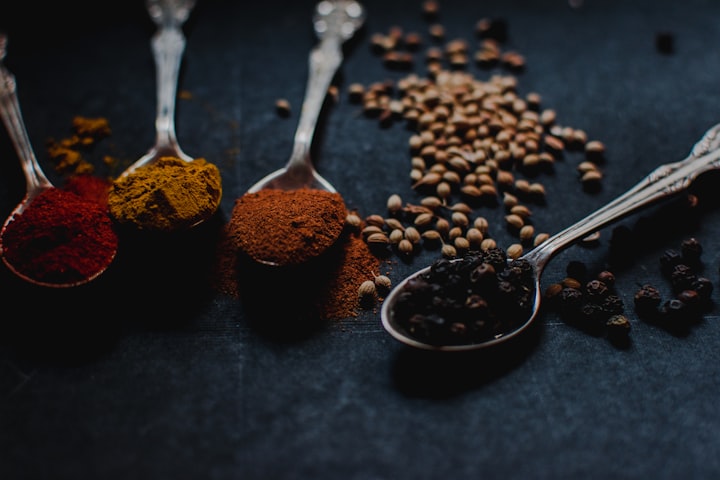Specialists Figured out how To Decrease Immersed Fat, Sugar, and Salt in Well known Food varieties Without Forfeiting Taste
Supplanting soaked fat and salt with spices and flavors is a delectable and sound decision

In response to the 1990s' fixation on low-fat eating regimens, various food producers killed immersed fats from their things, subbing them with sugars to safeguard the flavors. Lamentably, the adjusted items were no more grounded than the first variants, and today, the typical individual ingests an unnecessary measure of soaked fat.
Presently, a group of scientists from Penn State has found a technique to lessen the measures of immersed fat, sugar, and salt in famous American dishes without settling for less on taste. The stunt? Subbing the exorbitantly consumed fixings with a portion of solid spices and flavors.
"Cardiovascular sickness is the main source of death universally, and restricting immersed fat and sodium admission are key suggestions for lessening the gamble of fostering this illness," said Kristina Petersen, academic partner of wholesome sciences, at Penn State. "However, we realize that one of the vital boundaries to diminishing admission of these fixings is the kind of the food. Assuming you maintain that individuals should eat quality food, it needs to taste great. That is the reason our finding that members really favored a portion of the recipes in which a large part of the immersed fat and salt was supplanted with spices and flavors is so significant."
The group involved a broadly delegate data set from the Communities for Infectious prevention and Counteraction, called the Public Wellbeing and Nourishment Assessment Overview, to distinguish 10 of the most famous food sources that are regularly high in sodium, added sugars, and soaked fat. These included meatloaf, chicken pot pie, macaroni and cheddar, and brownies.
Then, they worked with culinary specialists to foster three renditions of these recipes. The first contained normal measures of soaked fat, sugar, and salt utilized in these recipes. The subsequent form was healthfully improved by eliminating the overabundance soaked fat, sugar, and salt. The third variant had a similar supplement profile as the subsequent rendition yet in addition contained added spices and flavors, for example, garlic powder, ground mustard seed, cayenne, cumin, rosemary, thyme, cinnamon, and vanilla concentrate.
For instance, the normal macaroni and cheddar recipe included salted margarine, 2% milk, American cheddar, and salt. For the healthfully further developed adaptation, the analysts traded the salted margarine for unsalted spread and decreased the sum in the recipe by 75%. They traded the 2% milk for skim milk, supplanted a portion of the American cheddar with decreased fat cheddar, and killed the additional salt. For the healthfully improved, in addition to spices and flavors, variant, the specialists added onion powder, garlic powder, ground mustard seed, paprika, and cayenne.
"Our objective was to perceive the amount we could bring down these overconsumed fixings without influencing the general properties of the food as far as mouthfeel and construction, and afterward include spices and flavors to work on the flavor," said Petersen.
Then, the analysts directed blind trials highlighting every one of the 10 recipes. Members assessed each of the three forms of a dish, each in turn, in a solitary meeting. Somewhere in the range of 85 and 107 customers finished each test. Members evaluated a few parts of worthiness for every recipe, including in general preferring and quality loving, like the food's appearance, flavor, and surface. Members then positioned the dishes arranged by inclination.
"We found that adding spices and flavors reestablished the general jumping at the chance to the level of the first food in seven of the ten recipes," said Petersen. "As a matter of fact, members really preferred a portion of the recipes better than the firsts."
In particular, members preferred the better, flavor-upgraded adaptations of the brownies and chicken in cream sauce essentially more than the first recipes. For five of the dishes - meatloaf, bean stew, fruity dessert, pasta with meat sauce, and taco meat - members preferred the better, flavor-improved adaptations about equivalent to the first variants. They loved the better, flavor-improved cheddar pizza, macintosh and cheddar, and chicken pot pie recipes not exactly the first variants.
At long last, the group demonstrated the likely effect of 25 to 100 percent of U.S. grown-up buyers eating these recipes rather than the first recipes. For both immersed fat and salt, they found that the assessed everyday decrease would be around 3% if 25% of purchasers took on the better recipes versus around 11.5% if 100 percent of shoppers embraced the better recipes. More modest assessed decreases in added sugars were seen across the demonstrated scope of buyer reception.
The outcomes were as of late distributed in the Diary of the Foundation of Sustenance and Dietetics.
"We exhibited a significant decrease in overconsumed supplements is conceivable with alteration of these 10 recipes, and these progressions are satisfactory to purchasers," said Petersen. "This recommends that more exploration ought to be finished to take a gander at how to carry out this all the more extensively, and how to teach individuals to make these sorts of changes. Significantly, these discoveries could be applied to the food supply in light of the fact that most food sources that individuals devour are bought in a pre-arranged structure. I believe that would significantly affect individuals' wellbeing."
Reference: "Utilizing spices/flavors to improve the kind of regularly eaten food sources reformulated to be lower in overconsumed dietary parts is an OK procedure and can possibly bring down admission of immersed fat and sodium: A Public Wellbeing and Nourishment Assessment Overview examination and visually impaired tasting" by Kristina S. Petersen, Victor L. Fulgoni, Helene Hopfer, John E. Hayes, Rachel Gooding and Penny Kris-Etherton, 31 July 2023, Diary of the Institute of Sustenance and Dietetics.
DOI: 10.1016/j.jand.2023.07.025
About the Creator
Ronaldo Teixeira
As a health advocate, my goal is to empower individuals to embrace healthy lifestyle habits by providing clear information and realistic strategies to promote vitality and longevity.






Comments
There are no comments for this story
Be the first to respond and start the conversation.